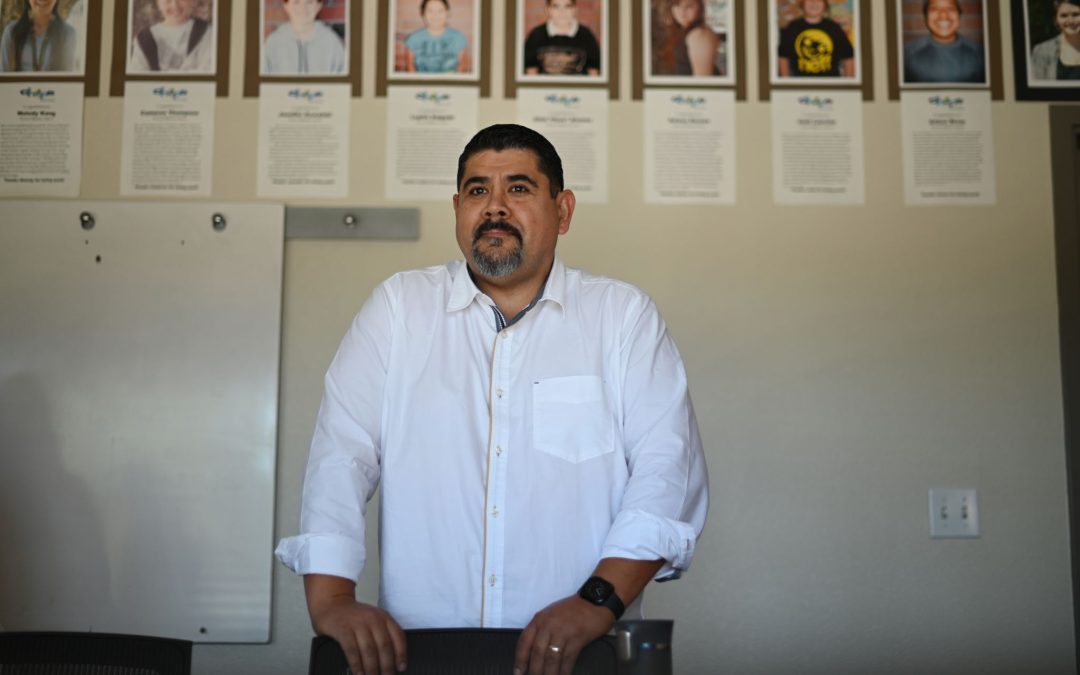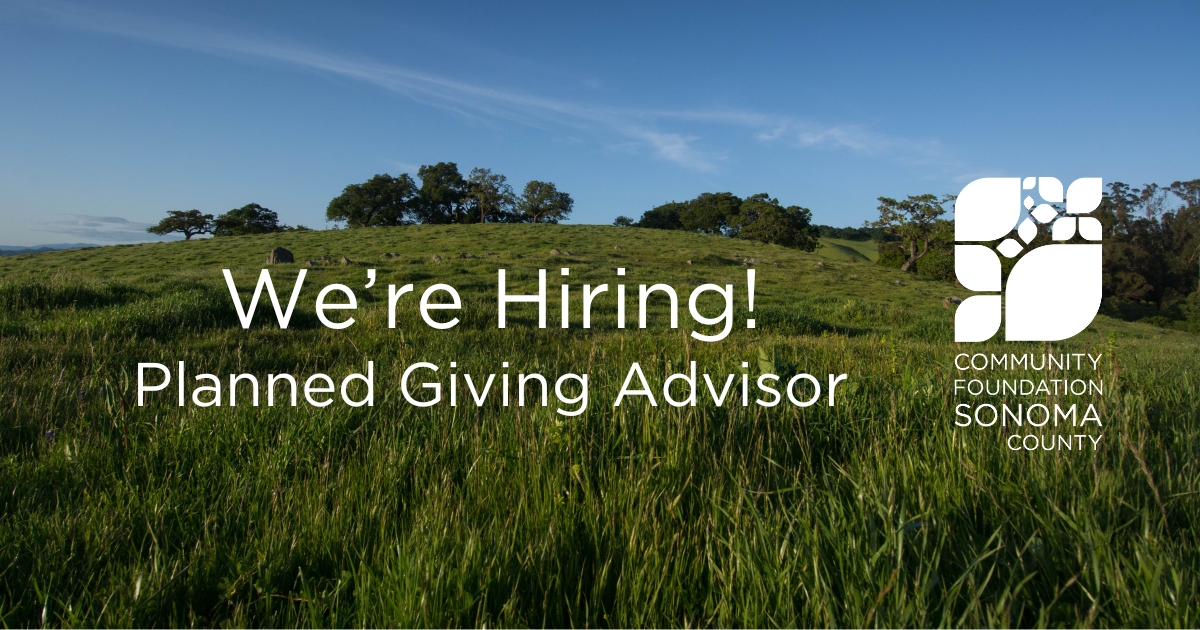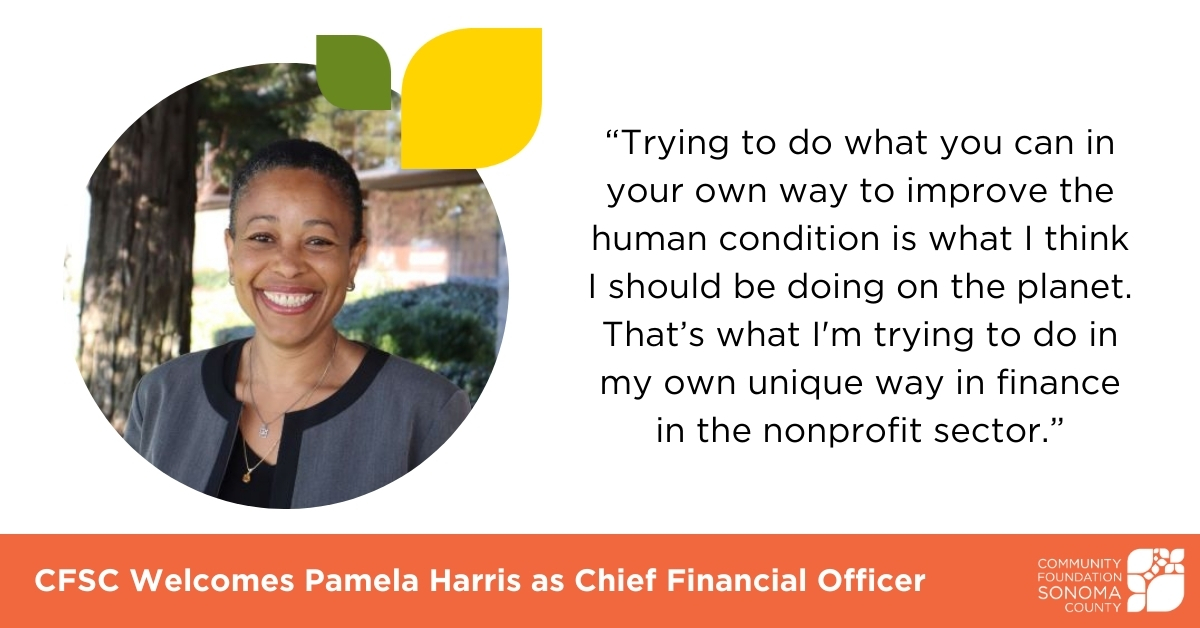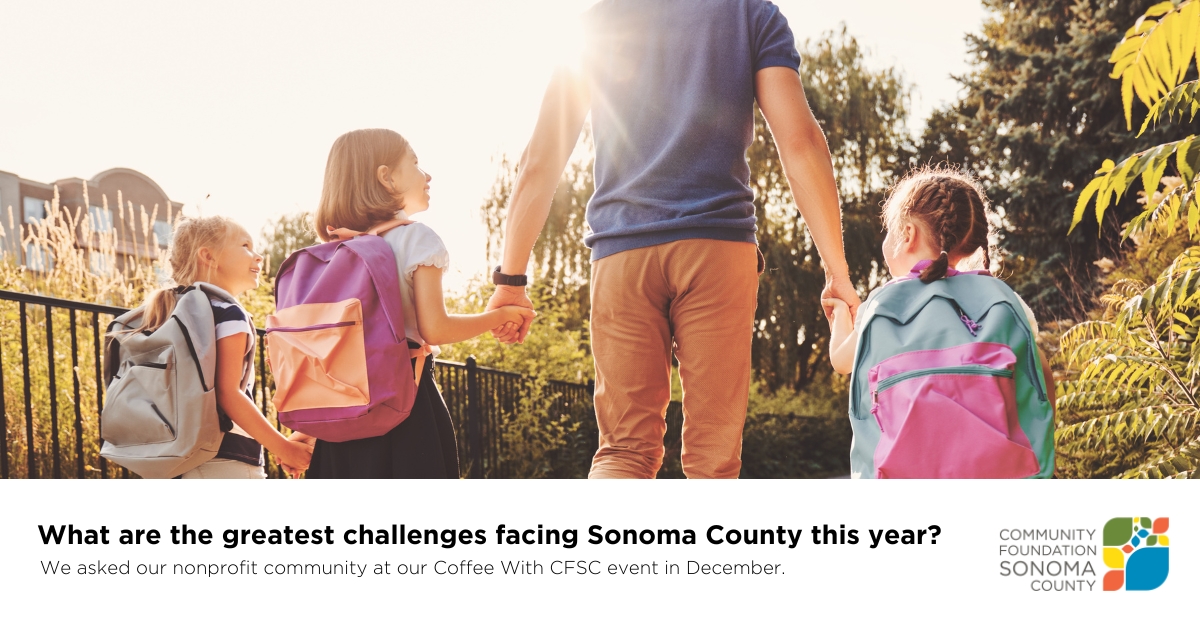After years focusing on Marin County, the Peter E. Haas, Jr. Fund—a supporting organization with the Marin Community Foundation—expanded their service area to include Sonoma County when founders Ginnie and Peter Haas moved to Petaluma. Philanthropy has been a part of the Haas legacy in the Bay Area for over a century, and the Haas’s believe in ‘giving where you live;’ this commitment to their communities led them to a collaborative endeavor with Community Foundation Sonoma County.
“We began talking with people in Sonoma County about what we should know about what the needs were, who was doing good work,” says Ralph Lewin, Executive Director of the Peter E. Haas Junior Family Fund and current board member at Community Foundation Sonoma County. “I think we talked to thirty leaders across Sonoma County, asked them to tell us what they think we should know before investing in the wellbeing and addressing the needs in Sonoma County.”
Lewin says that most community leaders pointed them toward the 2014 Portrait of Sonoma County report, a project originally commissioned by the Sonoma County Department of Health Services, that takes a human development approach to understanding the people and needs of Sonoma County’s diverse population. The report highlights disparities in the community along race, class, gender, and geography, and approaches the disparities from a solution-oriented lens. And rather than highlighting just the issues themselves, the report is shifting the conversation toward thinking about the structural impediments—or barriers that hinder greater access to mobility and opportunity at the neighborhood level.
The report had vital insights, but it was six-years old in 2020; after years of fires, housing shortages and widening income gaps throughout the county, the needs of Sonoma County had changed. Lewin was interested in updating the report and connected with Community Foundation Sonoma County, who put him in touch with numerous organizational leaders including Community Foundation Sonoma County’s President & CEO Óscar Chávez, who was at the time the Assistant Director of the Sonoma County Human Services Department.
“Portrait of Sonoma gets us to really think about the structural impediments to progress and the role advocacy and policy play in alleviating or perpetuating harm in communities living furthest away from opportunity,” says Chávez. “The findings in the report facilitates opportunities to talk about the macro forces hindering progress and invites the voices and perspectives of those living closest to the problems to put forth solutions that are both doable and attainable to improve their long-term wellbeing.”
The organizations decided to join forces to co-fund an updated Portrait of Sonoma County report. Other co-funders for the updated report include the County of Sonoma, First Five California, United Way of the Wine Country, Sonoma County Office of Education and numerous others. In addition to collaborating to support a new report through pooling financial resources, Chávez points to additional benefits beyond dollar amounts.
“By working together, we can all have a common understanding of the challenges that we’re dealing with,” says Chávez. “But more importantly, we can use the finding and work directly with residents at the neighborhood level to coalesce around a set of shared strategies for how we’re going to address these issues.”
The discoveries in the updated Portrait of Sonoma County report will be used by Health Action Together, a partnership focused on ending health and social equity disparities, to develop an Agenda for Action in partnership with community residents. The Agenda for Action will identify strategies and align partners and community resources to transform Sonoma County into a place where a person’s skin color, zip code, or place of birth does not determine their health, education, or income.
Chávez points out that co-investing is not a new idea, and he hopes to see more co-funding among organizations and institutions in the future. Collaborative efforts can solve fragmentation and fill gaps in nonprofit programs and services and help focus in on what needs to be done to ensure long-term wellbeing. We need to work to align the scale of co-investing to the size of the problem we seek to address, in order to create measurable impact over time.
Community Foundation Sonoma County has also found success in co-funding other projects through the Resilience Fund like On The Move, who offers a leadership training program to provide support for Latinx community members through their On The Verge program.
“I think there’s a lot of wealth in Sonoma County, and my hope is that people with financial resources will look to Community Foundation Sonoma County as a trusted place to learn about what needs there are in the community, what best philanthropic practices are, and as a place that we can come together as donors to really make a difference,” says Lewin.
“The idea of incremental change is a slow grind, but I believe that if we work across institutions, work across other funders, and align the necessary investments with the strength and persistence, we can create long-term and durable change. And in doing so, we build consensus about what those solutions could be,” adds Chávez.
Story by Dani Burlison











